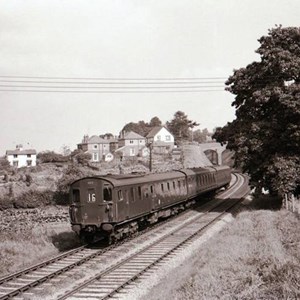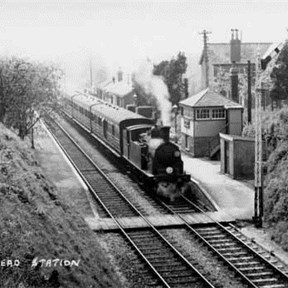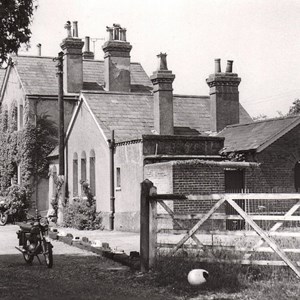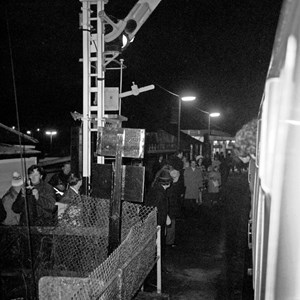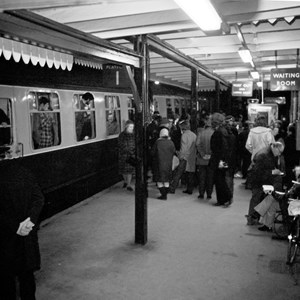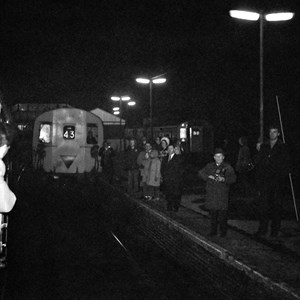Mid-Hants Railway
Mid-Hants Railway
Although this name is now synonymous with the Watercress Line steam railway, the story starts in 1830 when the London and Southampton Railway was considering a route through Alton for its main line from London. The need for moderate gradients meant that the line would have required a tunnel three miles in length, whilst at the same time the more northery route through Basingstoke was also considered and ultimately chosen for the main line to Southampton. The route through to Winchester was once again considered when the line from Guildford to Alton was being planned in 1845, but in the end they settled for the terminus in Alton, opening after much delay in 1852.
The then single track line from Guildford to Alton left the town out on a limb, so in May 1860 a solicitor from Alresford sent a letter to the board of the London and South Western Railway (LSWR) proposing an extension to Winchester, but they rejected the idea. In October the same year a similar proposal was sent to a local landowner, John Wood of Thedden Grange. asking for his support for a line from Alton to Winchester. By this time, the board of directors proposing the line (chaired by Edward Knight, nephew of Jane Austen) already had plans drawn up of their scheme. The fledgling Alton, Alresford and Winchester Railway was able to find enough subscribers locally to enable them to apply for a parliamentary bill for the line in December 1860. There was a struggle to find the required £150,000 capital, but eventually they found enough investors, including 2 Lords, 3 MPs and the Mayor of Winchester.
Construction started in February 1863. In 1865 the company decided to rename itself 'The Mid-Hants Railway Company' in anticipation of a branch southwards from Alresford, but this idea was later abandoned. The railway from Winchester to Alton finally opened on 2nd October 1865 , with trains run by the LSWR. The new line provided stations at Ropley, Alresford and Itchen Abbas, with a new through-station built at Alton with two platforms. The residents of Medstead had to wait until 1868 for Medstead station to be opened, hence why it is different to the other stations. It didn't receive "and Four Marks" after its name until 1937, despite the fact that the village of that name had existed for about 40 years. It is likely that the creation of the parish of Four Marks in 1932 that prompted the railway to recognise its existence.
The railway passed into the ownership of the London and South Western Railway (LSWR) in 1884 and then the Southern Railway (SR) in 1923 when 'the big four' companies were formed. Whilst remaining as a single track line, it had greater success than the branches to Basingstoke and Fareham. The inter-war period included the electrification of the line as far as Alton in 1937, making it a terminus of the electric train service to London. Meanwhile, following the second closure of the Basingstoke & Alton Light Railway in 1936/37, Butts Junction (at the south end of Alton) was rationalised. Trains going to Winchester used the right-hand track in both directions, and trains going along the Meon Valley line to Fareham used the left-hand track in both directions. This removed the need for the signal box and points at Butts Junction, effectively making the double track section into two bi-directional single lines which diverged from the platforms at the southern end of Alton station.
In the 1950s, after the formation of British Railways, the line became known for the weekend express trains that were frequently diverted from the main line to allow for engineering works. Thus, many people of a certain age remember the pre-preservation Mid-Hants Railway because they would travel down to Alton especially to photograph the diverted expresses. The much loved 'M7' former LSWR tank engines gave way to the diesel multiple units in 1957 as British Railways attempted to keep down the costs.
British Railways was re-branded as British Rail in 1965, reflecting the government's desire to create a more modern and efficient railway system, cutting out loss-making branch lines. Most people have heard of The Beeching Report (actually in two parts called 'The Reshaping of British Railways') issued in 1963 that was used as the blueprint for these cuts. The Mid-Hants Railway was listed in the report under the 'Passenger Services to be Withdrawn' section, so sure enough, in 1967 British Rail announced that it wanted to close the Mid-Hants line. More than a thousand people objected, leading to public enquiry. Councillors lobbied BR and tried to find funds to keep the line open, but they could not raise BR's required subsidy of £120,000 a year (£1.5m at 2017 prices). So despite all the objections and people's concerns over having to use the bus service as an alternative, the line from Alton to Winchester closed on 5th February 1973. Below are some pictures taken of the last train.
Whilst the councillors were negotiating with BR, an independent group of rail enthusiasts had convened with the initial purpose of saving the entire line as a working railway. They failed to secure the £800,000 asking price made by British Rail, but in the end they managed to raise enough to set up offices in Alresford station and eventually reopen the section of line to Ropley in 1977. The saddest part of the story is that having agreed a loan for the Mid-Hants Railway Ltd (MHR) to buy the land all the way to Alton, but only buy the track to Ropley, British Rail then scrapped the rest of the track from Ropley to Alton. To their credit, the MHR and its charitable arm, the Mid-Hants Railway Preservation Society, forged ahead and managed to relay the track to Alton, opening all the way through on 12th April 1985. The railway then very nearly experienced financial ruin, but in the end enough money was raised to just about keep the MHR going. Since that time the MHR's fortunes have been secured and it has gone from strength to strength. The main line connection at Alton brings a lot of people to the line from London and the success of this has led many other isolated preserved railways to also push towards their own connection to the national railway network.
From this point, it is better to look at the Mid-Hants Railway's own website (www.watercressline.co.uk) for further information. Of note, they have recently completed the new platform shelter at Ropley station, expanded the engine sheds to provide better facilities, installed a new footbridge (from Kings Cross station) to link to the new shed at Ropley, built and extended the miniature railway at Ropley - the list goes on. For those of us in Friends of Alton Station, we feel that our work to retain and ultimately fully restore the 1892 footbridge at Alton station is our local contribution to the Watercress Line. In turn, the steam railway is an important tourist attraction that helps to bring people into Alton.
For further reading, see this book on the subject:
The Mid-Hants Railway From Construction to Closure by R.Hardingham, Runpast Publishing 1995, ISBN 1 870754 29 8
Find out more about the history surrounding Alton's railways on the following pages:
HISTORY Page Index
Introduction: The Railway Comes to Alton
Footbridge History
The Ladies of Alton
Mid-Hants Railway
Basingstoke & Alton Light Railway
Meon Valley Railway
Longmoor Military Railway
Bentley & Bordon Light Railway
Click on these links, or use the drop-down menu above to navigate between the pages.
